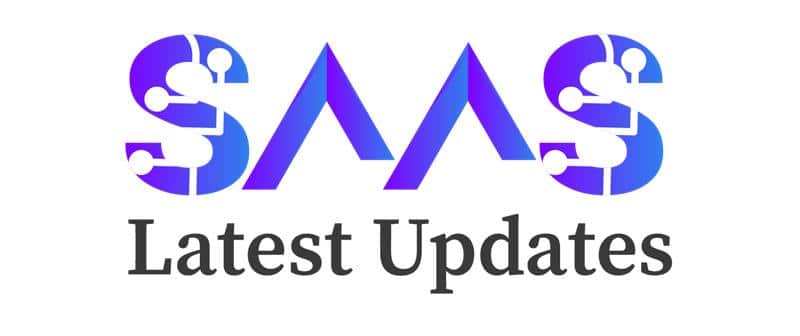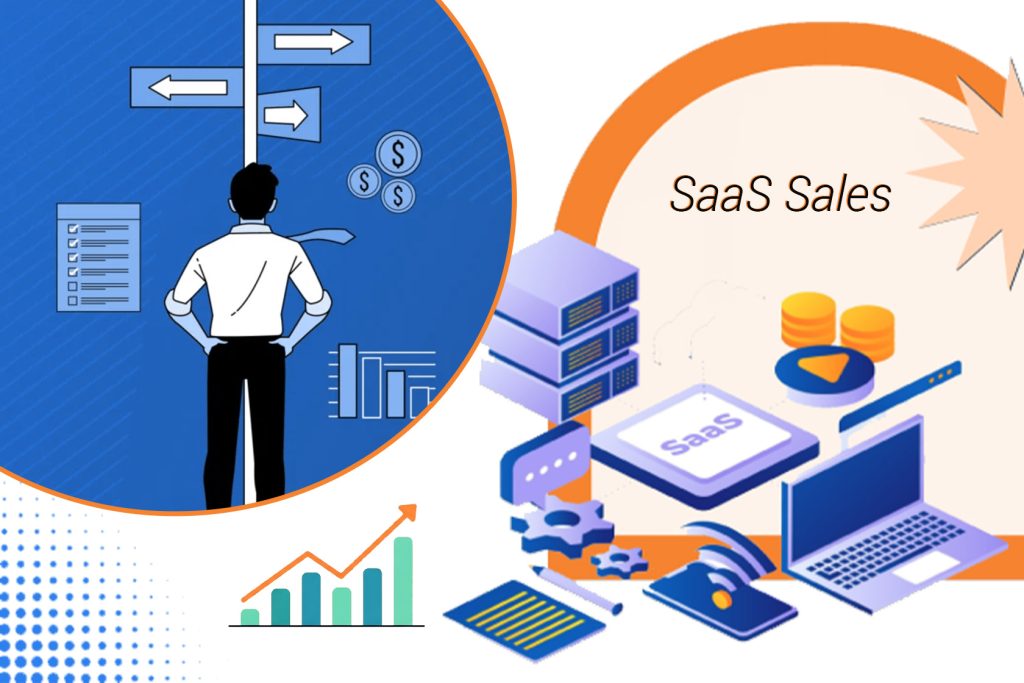20-Second Summary
The global SaaS market is predicted to get to the mark of $315.68 billion in 2025 with a continued 20% compound annual growth rate, influenced by the AI-powered SaaS and a shift of businesses towards the subscription-based business models.
The median Net Revenue Retention rate of SaaS sales stands at 101% showcasing the slight expansion of revenue of SaaS companies from their existing customers, but this is also highlighting the challenges companies face in bringing the growth using upselling and cross-selling.
So, What SaaS Sales is all about? It is the selling of cloud-based solutions for the problems of businesses, and this guide will walk you through its introduction, process, key metrics, challenges, and tools that enable a smooth SaaS Sales process.
What is SaaS Sales Exactly?
As mentioned earlier, SaaS Sales is the process of selling cloud-based software subscriptions to businesses to solve their problems, like a cloud CRM solution like “Salesforce,” a communication SaaS tool like “Slack,” and a productivity SaaS tool like “Zoom.”

SaaS sales are not the selling of a SaaS tool only. It goes beyond that because it involves the recurring revenue model, where you have to retain your client to stay longer with you by providing them with ongoing value demonstration with good long-term results.
The SaaS vendors also need to make sure that they keep acquiring new subscribers and retain them with older ones through continuous value and upselling within their customer base.
SaaS sales is a long-term process that requires the SaaS Vendors to build long-term relationships with their clients, and retain them, while attracting new ones too.
How SaaS Sales Works: SaaS Sales Cycle Stages
The SaaS sales process, or the sales cycle, has a total of five stages, from finding your potential customers to making the sale and then providing a continuous good post-sale experience.
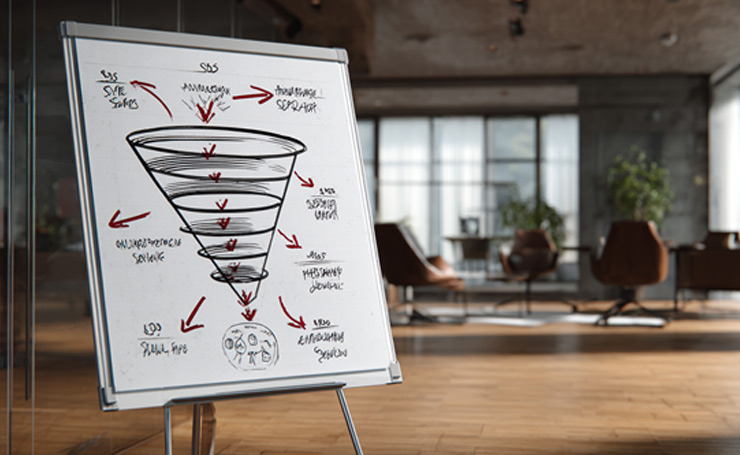
This five-step SaaS Sales cycle has been explained below.
Lead Generation and Prospecting
The first step of the SaaS sales process is lead generation and the prospecting of the client.
- This is where the SaaS Vendors use their inbound and outbound SaaS Sales strategies.
- With inbound marketing, they attract the clients already searching for their software using their blogs and social media platforms, while with outbound marketing, they use emails, cold calling, and TV ads to reach out to their potential clients.
- The initial step is finding clients through inbound or outbound marketing tactics, to generate interest in them in order to get them as potential leads interested in buying your software solution.
Discovering and Sales Qualification
The second step of the cycle is really important, where you try to find out if the client is a prospect that can fit into the ICPs of your company, and is a deal that has a good chance of closing.

You essentially make discovery calls to speak with the client, ensuring they have the budget and need to purchase your subscription, as well as verifying that their timeline for buying the subscription aligns with yours.
Presenting Solution with Demonstration
Once you have finalized your prospect, you meet them and then present your SaaS solution to them by offering a live demonstration showing how the tool can solve their pain points and problems.
Clarifying Objections and Closing the Deal
Once you have presented the solution to the client, you listen to their concerns regarding the SaaS tool.

- If there are any objections in the mind of the client, you clarify them using the sales skills and show them how their obstacles will be removed using the solution you are providing.
- This is exactly the saas sales process, where you also finalize the pricing and other terms of deals with the client company.
- The contract is signed between you and the client, and the deal gets closed, but the process does not stop here, because it is a recurring investment and service model.
Onboarding and Retention of Customers
This last step of the SaaS sales is all about the post SaaS sales strategies, where, after closing, you need to start the onboarding process of your client, by helping them to integrate the software within their work system.
After the successful integration, the focus and strategy of the SaaS vendor is to focus on customer success by ensuring that they keep finding value throughout their customer journey with them, which enhances customer retention and helps the SaaS Company grow.
SaaS Sales Strategies
Although we have lightly discussed the concept of inbound and outbound sales strategy or marketing strategy in the SaaS sales process, we need to go through these strategies in detail, one by one, to see how they help the SaaS companies to attract the right clients that turn into potential long-term leads.
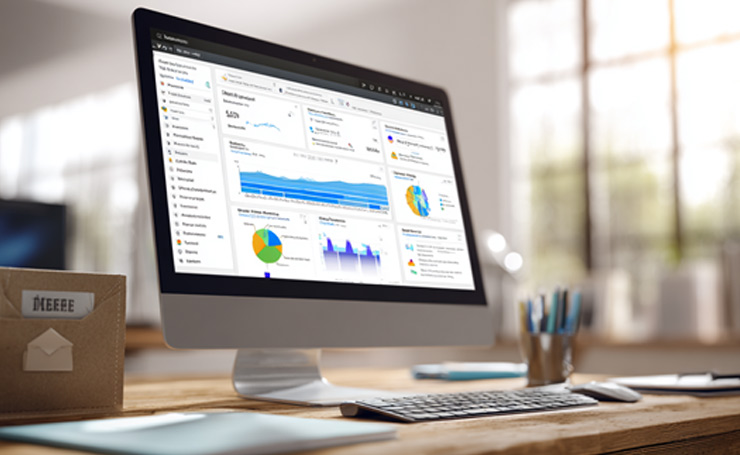
Cold Calling: Converting Prospects Through Direct Outreach
Cold calling is a valid SaaS sales strategy, which is an outbound marketing tactic where you directly call prospects as an outreach method.
The contact is immediate with a personal engagement with your client, and this method is usually used for the B2B leads qualifications for high-value deals.
Outbound Emails: Targeted Messaging for Lead Engagement
Outbound emails are another SaaS sales strategy, where targeted emails with catchy Email Subject Lines are sent to potential leads.
- This method of outreach is scalable, measurable, and cost-effective as well.
- The only con to this method is that your email might end up in the spam folder.
- The outbound emails are very effective in nurturing the leads and for demo scheduling as well.
- You can actually use the outbound emails throughout your SaaS sales process as an effective Email Marketing Customer Journey, providing value to your client till their purchase and for after-sales services and product updates announcements.
Social Selling: Building Relationships via Social Networks
Social selling is an inbound marketing Strategy for SaaS Sales, where the SaaS vendors use their websites and social media channels for online engagement of their prospects.
- They create posts and campaigns around their SaaS tools and then push these out through social media ads or by on-page optimization to reach the search results of the potential clients searching for these tools.
- The social selling strategy basically engages the prospects via social networks, builds trust, and establishes a long-term relationship.
- Even though the results are slow, this requires a consistent effort to create brand awareness and lead nurturing using social media and SERPs.
SaaS Sales Models
Now, when it comes to the SaaS companies, they really need to define how their product will be sold and how long the sales cycle will be with each client. This is essential for them to align their selling strategies and sales approach with their customers’ requirements and their own revenue growth.
This is where the SaaS Sales Models come in. In the SaaS industry, vendors employ various sales models tailored to their target customers ‘ needs and product complexity.
There are three SaaS Sales models named Self-Service sales models, Transactional sales models, and Enterprise sales models, and their comparison has been given based on the cycle of the product, including the type of team interaction, the length of sales cycle, target customer type, pros, and cons.
| SaaS Sales Model | Target Customer Type | Pricing Level | Sales Cycle Length | Sales Team Size & Involvement | Communication Across Departments | Pros | Cons |
| Self-Service Model | Individual users, small businesses | Low | Short | Minimal (often automated) | Low (mainly marketing & product teams) | Scalable, low acquisition cost, quick conversions | Limited upselling potential, low customer touch |
| Transactional Model | SMBs and mid-market customers | Medium | Moderate | Moderate (small inside sales team) | Medium (collaboration between sales, marketing, and support) | Balanced between automation and personalization | May require constant follow-up and nurturing |
| Enterprise Model | Large corporations, high-value clients | High | Long | Large, experienced sales team | High (involves sales, marketing, product, legal, and finance) | High revenue potential, strong relationships | Long sales cycle, higher CAC, complex negotiations |
SaaS Sales Challenges and Solutions
The SaaS industry is also facing challenges like all other industries that have a rising demand but high competition.

Below, we have listed some of the key challenges faced by SaaS companies, along with their solutions.
Competition and Market Saturation
The SaaS market is highly saturated due to intense competition among SaaS vendors. To overcome this challenge the SaaS vendors must emphasize their unique selling points and continually innovate their products to deliver long-term value.
AI as a SaaS Challenge
The rapid integration of AI in the SaaS industry has pushed vendors to adapt quickly. SaaS providers now face higher customer expectations and must develop new skills to embed AI into their products and systems. They need to deliver seamless AI integration, protect customer data privacy, and balance automation with personalized customer experiences.
Long SaaS Sales Cycles
Long sales cycles are very much a part of SaaS sales, but they are also a challenge, as longer cycles mean delayed revenue. In order to combat this, vendors should have a proper customer journey strategy planned with consistent communication throughout the sales cycle to keep the customer engaged with the product and help them make a purchase decision.
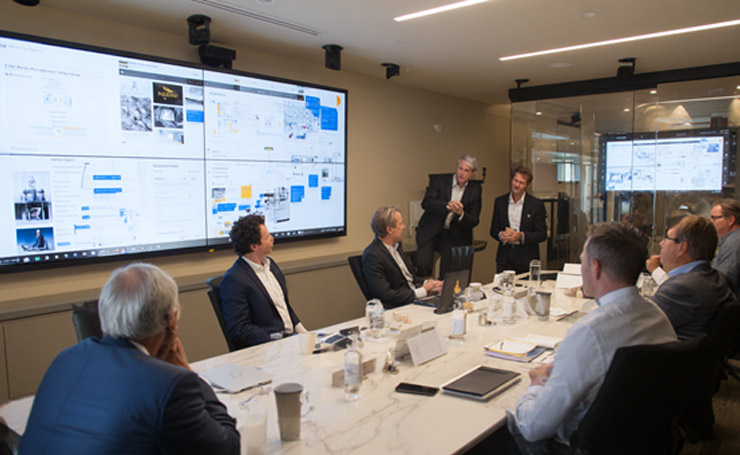
Technological Advancements
Continuous technological developments require the SaaS sales representatives to stay ahead of the competition and be able to understand new innovations and explain them to clients in simple language. SaaS companies must enable training for their sales personnel to ensure they are ready to represent their product effectively at all times.
Maintaining Customer Success Rate
An unsatisfied customer means a customer churning out to your competitors. Ensure you are providing great support to your old clients, no matter how much you are expanding and sales are increasing. Also, enable good security measures and showcase that to your client to let them know their data is secured with you and that they are valued throughout their sales journey.
Roles in SaaS Sales Teams
Every SaaS Sales process involves a team that makes the sales cycle productive and helps the client engage in long-term sales.
Sales Development Representatives (SDRs)
The role of an SDR is during lead generation and lead qualification. They are a part of the marketing team and their key activities are around content marketing, i.e., the cold outreach and paid ads to find potential clients.

Once they have the qualified sales lead enter the sales funnel, they research the prospect and, based on their intent, they pass down these sales-ready leads to the account executives.
Account Executives
The account executives then play a major role in product demonstrations, proposals, negotiations, and deal closings.
- They showcase the product value to prospects by conducting demo calls and highlighting the features and ROI aspects of the product to help the client understand the benefits of the product.
- They finalize the offer and pricing by sending proposals, negotiating the pricing and the contract terms via verbal and signed contracts.
- By getting the contract signed, they convert the prospect into a customer by completing the billing setup, and then the customer journey is forwarded to the customer success managers.
Customer Success Managers
The customer success managers assist acquired customers with the onboarding process, ensuring a smooth product adoption. They help them set up their accounts, guide them through initial product usage, and provide training.

They also build long-term relationships by monitoring their software usage, providing guided support, and achieving a higher customer lifetime value.
The customer success managers also identify upgrades or add-on opportunities to increase the account value, gaining an outcome of boosted MRR and ARR
Saas Sales Key Metrics
There are several key metrics in SaaS sales that can be used to measure and improve the sales performance. These can be divided into following categories
- Revenue Growth and Recurring Income Metrics
- Customer Growth and Loyalty Performance Metrics
- Operational Efficiency and Business Health Indicators
Revenue Growth and Recurring Income Metrics
These metrics measure how effectively a SaaS company earns and sustains predictable revenue through subscriptions, and help the sales team to track recurring income and overall business growth.
| Metric | What It Measures | How it helps SaaS Sales |
| Monthly Recurring Revenue (MRR) | Recurring income every month from all active users | Monitors consistent revenue and short-term growth trends |
| Annual Recurring Revenue (ARR) | Recurring income for each year from active customers | Helps to reflect on continuing financial stability and growth potential |
| Average Revenue Per User | Average monthly revenue generated per active customer | Helps identify upselling opportunities and product value per user |
| Average Revenue Per Account (ARPA) | Average revenue per business account or contract | Useful for B2B SaaS to assess account-level profitability |
Customer Growth and Loyalty Performance Metrics
These metrics analyze how efficiently a SaaS business attracts, converts, and retains customers.
Customer growth and loyalty performance metrics focus on acquisition costs, user engagement, and lifetime profitability.
| Metric | What It Measures | How it helps SaaS Sales |
| Customer Acquisition Cost (CAC) | Average sales and marketing expense required to acquire a new customer | Shows the efficiency of marketing and sales investments |
| Customer Lifetime Value (LTV) | Total revenue a customer brings during their relationship | Indicates long-term profitability and retention value |
| Churn Rate | Rate (percentage) of customers who cancel subscriptions | Reveals retention issues and satisfaction levels |
| Customer Retention Rate | CRR is the percentage of customers who renew subscriptions continuously | Higher rates reflect stronger loyalty and customer satisfaction |
| Lead Velocity Rate (LVR) | Monthly growth rate of qualified leads | Predicts future revenue and pipeline growth |
| Trial Conversion Rate | Percentage of free-trial users converting to paid plans | Shows product-market fit and onboarding effectiveness |
Efficiency and Health Metrics
These metrics evaluate how sustainable and efficient the SaaS business model is.
They strike a balance between growth, profitability, and customer sentiment.
| Metric | What It Measures | How it helps SaaS Sales |
| LTV to CAC Ratio | Relationship between lifetime value and acquisition cost | The ideal ratio that signals efficient customer acquisition and profit potential is three ratio one |
| CAC Payback Period | Time required to recover customer acquisition costs | Shorter payback means faster profitability and better cash flow |
| Net Promoter Score | Measures customer satisfaction and likelihood to recommend | High scores indicate strong customer advocacy and retention |
| Rule of 40 | Combines revenue growth rate and profit margin | Determines overall SaaS business health and investor attractiveness |
Tools and Technologies that Benefit SaaS Sales
Just like any other industry, SaaS vendors rely on specialized tools to streamline their sales operations. Since the SaaS sales cycle involves multiple stages, from lead generation to customer retention, teams use a variety of platforms for different purposes.

Below are some key tools that enhance efficiency and performance in SaaS sales.
CRM and Sales Management Tools
For CRM and Sales management, SaaS vendors can use tools like Salesforce, HubSpot, Pipedrive, Zendesk, Kaspr, and Cognism. These tools can help with customer relationships, automate sales workflows, and track performance metrics.
Communication and Automation Tools
For communication and automation, tools like Zoom, Intercom, Zapier, Grammarly, MailChimp, and Milkshake can be used to help teams communicate with leads, automate follow-ups, and personalize outreach.
Productivity and Collaboration Tools
Productivity tools like Google Analytics, Notion, Calendly, Dropbox, Asana, and Bardeen can be used for improving team collaboration, automating repetitive tasks, analysing user behaviour, and scheduling demos efficiently.
Demo and Proposal Tools
SaaS Sales teams can also leverage solutions like Reprise and StoryDoc to enable interactive product demos and professional proposal creation so their sales teams close deals faster and increase conversion rates.
Real-World SaaS Sales Case
HubSpot redesigned its own website (“Get Started” flow, demo landing pages, improved UX) using analytics data and CRO practices.
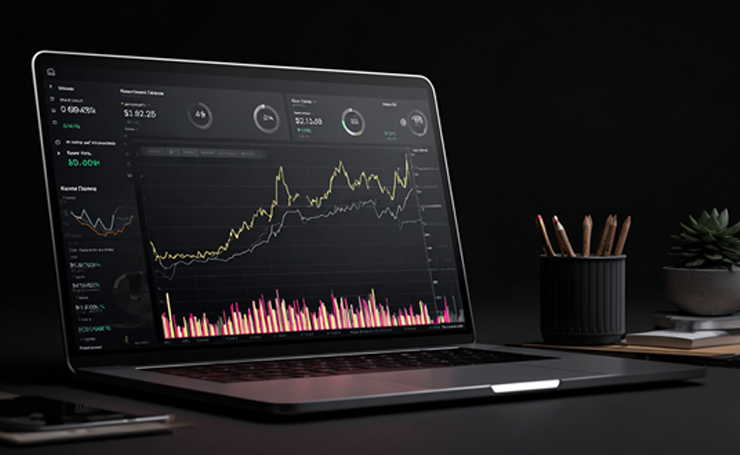
Results included:
- Demo requests increased by ~35% by volume
- New landing page design converted 57% better than the old design
- Product signups rose by 27% overall.
Final Remarks
SaaS Sales is the simple act of making sales of the cloud-based products by the SaaS companies. But it is not as simple as making a product purchase.
SaaS sales involve a long-term sales cycle with active users that stay with your company for the long term, using your softwares, seeking consistent value, innovations, and team support from your company throughout their customer journey with you.
With the right SaaS sales strategies and a competitive team, along with a focus on innovation, SaaS vendors can improve their SaaS sales and not only retain old clients but also capture more market share.
While you are searching for SaaS information, do read our analysis of the Top 30 AI SaaS Vendors.
Frequently Asked Questions
Is SaaS sales B2B?
Yes. Most SaaS sales are B2B (Business-to-Business), where companies sell cloud-based software to other businesses. But SaaS sales also follow a B2C or hybrid model, depending on the target audience and pricing structure.
What is a SaaS sales strategy?
A SaaS sales strategy defines how a company attracts, converts, and retains customers for subscription-based products. It includes lead generation, personalized demos, pricing models, onboarding, and retention tactics designed to increase Monthly Recurring Revenue (MRR) and reduce churn.
What is SaaS sales, and how does it differ from traditional software sales?
In SaaS sales, a subscription-based software is sold, unlike traditional software that comes with one-time licensing and installation. A SaaS Sales is a continuous cycle with recurring revenue, having a long-term customer relationship managed by the vendor till the customer uses their software.
What are the important stages in the SaaS sales process?
The SaaS sales process typically includes lead generation, qualification, product demo, negotiation, onboarding, and retention.
Which metrics are most important to measure SaaS sales success?
Key SaaS sales metrics include Monthly Recurring Revenue (MRR), Annual Recurring Revenue (ARR), Customer Acquisition Cost (CAC), Customer Lifetime Value (LTV), and Churn Rate. These indicators reveal profitability, growth potential, and sales efficiency.
What roles exist in a SaaS sales team, and what do they do?
A typical SaaS sales team includes Sales Development Representatives (SDRs) for lead qualification, Account Executives for demos and deal closing, and Customer Success Managers for onboarding and retention.
What are the common challenges in SaaS sales?
Common SaaS sales challenges include high competition, AI integration, market saturation, long sales cycles, technological advancements, and customer churn.
How can common challenges in SaaS Sales be overcome?
Businesses can overcome them by improving lead qualification, offering personalized demos, optimizing onboarding, and focusing on customer success to build loyalty and retention.
